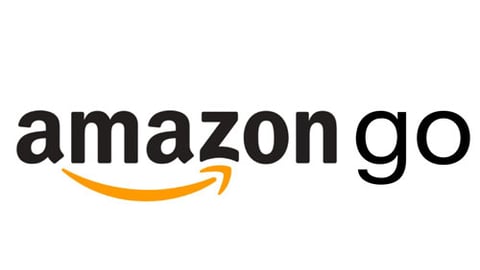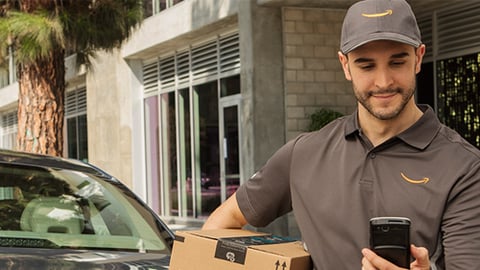How C-stores Can Rival the Amazon Customer Experience
NEWARK, N.J. — Convenience store operators are faced with the very real threat that Amazon has become. In a case of you can run, but you can't hide, the channel needs to step up its game before it falls victim to the threat, like other retailers before.
"Between the launch of its convenience store concept Amazon Go, its push for same-day delivery and its acquisition of Whole Foods Market last year, Amazon has been generating enormous buzz about its growing domination of the general retail and grocery channels," Convenience Store News Editorial Director Don Longo said during a recent webcast entitled "The Amazon Effect: How to Compete in the New World of Convenience," held in partnership with loyalty provider Paytronix.
Amazon's industry disruption, though, goes way beyond traditional retail, according to Longo. "Many in the convenience store industry are also looking at the tech giant and scrambling to find ways to overcome Amazon's growing impact on 'convenience,'" he explained.
It is the convenience store industry's responsibility to take back convenience before Amazon overcomes it, Kim Otocki, marketing specialist at Paytronix, explained during the Aug. 9 webcast.
One only has to look at what Amazon's growth has done to other retailers. Barnes & Noble and Borders Books were once the leading names in the bookselling business. Enter Amazon and now, Borders no longer exists and Barnes & Noble continues to struggle.
"Today, 64 percent of all printed book sales online belong to Amazon. They are masters of the book industry," Otocki pointed out, adding that 67 percent of all e-book sales also belong to Amazon.
"Amazon really can take over an entire industry and make sure it is their industry and nobody else can break through," she said.
Amazon's latest concept, Amazon Go, takes aim at c-stores. "They are coming after us and trying to take our share of the market away. We need to fight back," Otocki urged.
So, what does Seattle-based Amazon do well?
They know everything about their customers. The core benefit Amazon provides is convenience — served with targeted messaging driven by the guest data it collects, according to the Paytronix executive.
The ecommerce giant also provides a one-stop, frictionless shopping experience.
"They really have a big hold on this convenience factor, especially that couch/sofa surfing and one-stop shop, and that's what they are hitting us with. They are coming in and taking over, and showing us what convenience can be when we take it to the next level," she said.
How to Fight Back
How does Amazon master customer experience, and what can the convenience channel do to match it?
According to Otocki, there are three key areas to tackle:
1. Amazon Knows What Customers Want
"They know what you like and don't like; they know what you are probably going to want based on your order history and what your friends and like-minded people are purchasing," she said.
Looking at the next wave of consumers, the younger generation has been served this highly targeted content since early on and are demanding it from all brands.
To get to know its customers as well as Amazon does, c-stores must develop loyal customers. Loyalty programs enable c-store retailers to collect information on their customers and "really slice and dice, and get to the core of what is motivating our customers to come into the store," Otocki said.
However, they can't stop at just having a loyalty program. According to the marketing specialist, they also need to:
- Drive engagement through the loyalty program;
- Get customer feedback; and
- Use the data collected.
2. Amazon Knows When Customers Want It
Amazon's Prime Now offers a two-hour delivery window. "That is a convenience they are providing to their customers and it's one of the things that is starting to eat away at convenience stores," she said.
C-stores can get to the point of knowing when their customers want something through: digital and mobile messaging; SMS and text messages; vocal interactions with other devices like Amazon's Alexa or Google Home; and geofencing.
"Geofencing can be a real game changer for convenience," Otocki said. "It is a really effective strategy to be able to pull your customers in when they are right by your store. That offers another level of convenience. They don't have to wait for that two-hour delivery window. They don't have to wait until they get home to get their products."
In fact, Paytronix data shows geofence messaging provides a 30-percent lift in visits and spend.
3. Amazon Closes the Deal
Amazon Prime members convert 74 percent of the time.
"It's because they are very loyal to Amazon and they have a great customer experience based on how relevant the content is, and how tailored their entire customer experience and buying journey is," said Otocki.
The proliferation of services, and devices to access those services, is pushing the evolution of convenience. For example, retailers are integrating their social media platforms with mobile ordering. Domino's Pizza Inc., for one, allows customers to order via Twitter, while 7-Eleven Inc. interacts with customers through Facebook Messaging.
"It is blurring the lines between traditional services and making sure you are providing convenience across all the platforms that we know our customers are using," Otocki explained.
And it goes beyond that to Apple's Siri and Google Assistant. "Consumers are attracted to the ease of use and they don't have to download anything else," she added. "They have it all within a click of their finger."
Convenience store retailers have been good at communicating with customers through smartphones, but they may need to shift part of their focus to other devices like Google Home and smartwatches, according to Otocki.
Overall, she offered three tools convenience store retailers should have in their toolbox to not only join the shift in convenience, but also fight the Amazon effect:
- Implement online ordering or ordering ahead. "We have the ability, but need to think about what products and services you want to offer. Made-to-order food or everything available in the store?" she posed.
- Embrace mobile payments. "Convenience stores have been embracing mobile payments and it provides a quicker way for their customers to get in and get out, provides frictionless shopping, and provides a way to collect data. It can be integrated with the loyalty program," she explained.
- Home delivery. "We've seen a couple of players in the convenience store industry play around with home delivery, like 7-Eleven testing drone delivery," she noted. "Home delivery is going to be a big thing for convenience stores to be able to compete with Amazon Prime Now and its two-hour delivery window. Convenience stores can do the same thing."
A replay of "The Amazon Effect: How to Compete in the New World of Convenience" webcast is available here.






